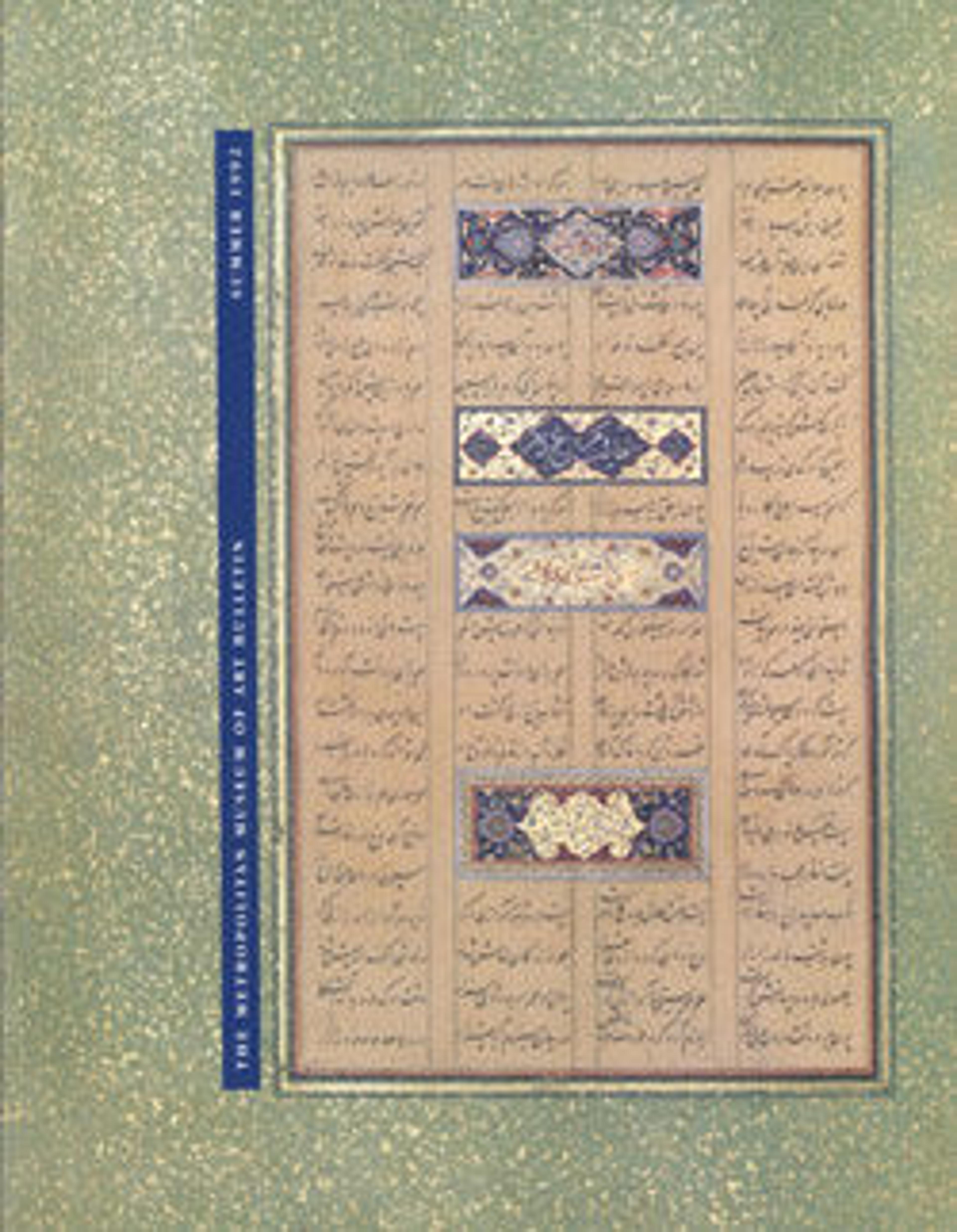Board for Ruling Paper
Before the scribe could begin copying text onto folios, he had to rule the sheets in some discreet manner to produce lines to follow when writing the text. These lines could be made in a variety of ways. The most common method was to prick tiny holes with a needle or knife along the outer edges of the unfolded bifolios. The horizontal ruling lines were then made by connecting the prickings with a stylus that had a carbon or lead point. Ruling lines could also be produced in a faster manner, using an instrument called a ruling frame, a board with parallel strings or wires fixed across it. The slightly dampened paper would be pressed against the frame, and the strings would cause tiny raised ridges on each leaf, forming raised lines.
Artwork Details
- Title:Board for Ruling Paper
- Date:17th–18th century
- Geography:Attributed to Iran or Turkey
- Medium:Cotton twine and ink on paper
- Dimensions:H. 9 1/2 in. (24.1 cm)
W. 6 5/8 in. (16.8 cm) - Classification:Codices
- Credit Line:Gift of H.P. Kraus, 1973
- Object Number:1973.1
- Curatorial Department: Islamic Art
More Artwork
Research Resources
The Met provides unparalleled resources for research and welcomes an international community of students and scholars. The Met's Open Access API is where creators and researchers can connect to the The Met collection. Open Access data and public domain images are available for unrestricted commercial and noncommercial use without permission or fee.
To request images under copyright and other restrictions, please use this Image Request form.
Feedback
We continue to research and examine historical and cultural context for objects in The Met collection. If you have comments or questions about this object record, please contact us using the form below. The Museum looks forward to receiving your comments.
